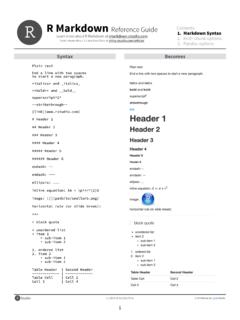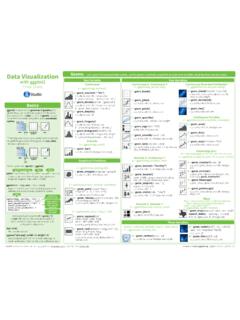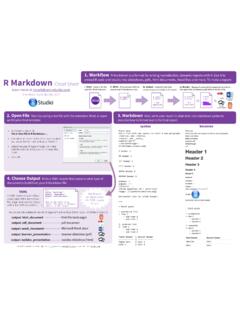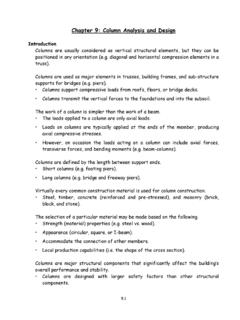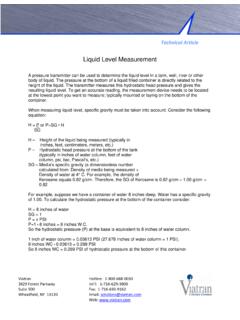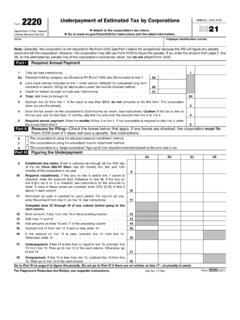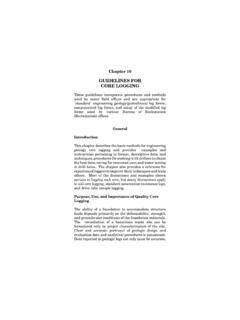Transcription of Four Column layout Cheat Sheet - RStudio
1 Advanced R Cheat Sheet Environment Basics RStudio is a trademark of RStudio , Inc. CC BY Arianne Colton, Sean Chen 844-448-1212 Updated: 2/16 Environments Environment Data structure (with two components below) that powers lexical scoping list ( Bag of names ) each name points to an object stored elsewhere in memory. If an object has no names pointing to it, it gets automatically deleted by the garbage collector. Access with: ls('env1') environment used to implement lexical scoping. If a name is not found in an environment, then R will look in its parent (and so on). Access with: ('env1') Four special environments environment ultimate ancestor of all environments Parent: none Access with: emptyenv() environment - environment of the base package Parent: empty environment Access with: baseenv() environment the interactive workspace that you normally work in Parent: environment of last attached package Access with: globalenv() environment environment that R is currently working in (may be any of the above and others) Parent: empty environment Access with: environment() environment - an environment where the function is created.
2 It determines how function finds value. Enclosing environment never changes, even if the function is moved to a different environment. Access with: environment( func1 ) environment - all environments that the function has a binding to. It determines how we find the function. Access with: pryr::where( func1 ) Example (for enclosing and binding environment): environment - new created environments to host a function call execution. Two parents : environment of the function environment of the function Execution environment is thrown away once the function has completed. environment - environments where the function was called. Access with: ( func1 ) Dynamic scoping : About : look up variables in the calling environment rather than in the enclosing environment Usage : most useful for developing functions that aid interactive data analysis Function Environments Search path mechanism to look up objects, particularly functions.
3 Access with : search() lists all parents of the global environment (see Figure 1) Access any environment on the search path: ('package: base ') Figure 1 The Search Path Mechanism : always start the search from global environment, then inside the latest attached package environment. New package loading with library()/require() : new package is attached right after global environment. (See Figure 2) Name conflict in two different package : functions with the same name, latest package function will get called. Figure 2 Package Attachment search() : '.GlobalEnv' .. 'Autoloads' 'package: base ' library(reshape2); search() '.GlobalEnv' 'package:reshape2' .. 'Autoloads' 'package: base NOTE: Autoloads : special environment used for saving memory by only loading package objects (like big datasets) when needed Search Path Binding Names to Values Assignment act of binding (or rebinding) a name to a value in an environment.
4 1.<- (Regular assignment arrow) always creates a variable in the current environment 2.<<- (Deep assignment arrow) - modifies an existing variable found by walking up the parent environments Warning: If <<- doesn t find an existing variable, it will create one in the global environment. y <- 1 e <- () e$g <- function(x) x + y function g enclosing environment is the global environment, the binding environment is "e". Create environment: env1< () Created by: Arianne Colton and Sean Chen Human readable description of any R data structure : Every Object has a mode and a class : represents how an object is stored in memory type of the object from R s point of view Access with: typeof() : represents the object s abstract type type of the object from R s object-oriented programming point of view Access with: class() RStudio is a trademark of RStudio , Inc.
5 CC BY Arianne Colton, Sean Chen 844-448-1212 Updated: 2/16 Data Structures are built on top of integer vectors using two attributes : when you know the possible values a variable may take, even if you don t see all values in a given dataset. base Type (C Structure) S3 R has three object oriented systems : is a very casual system. It has no formal definition of classes. It implements generic function OO. Generic-function OO - a special type of function called a generic function decides which method to call. Message-passing OO - messages (methods) are sent to objects and the object determines which function to call. works similarly to S3, but is more formal.
6 Two major differences to S3 : Formal class definitions - describe the representation and inheritance for each class, and has special helper functions for defining generics and methods. Multiple dispatch - generic functions can pick methods based on the class of any number of arguments, not just one. classes are very different from S3 and S4: Implements message-passing OO - methods belong to classes, not functions. Notation - $ is used to separate objects and methods, so method calls look like canvas$drawRect('blue'). S3 : R's first and simplest OO system Only OO system used in the base and stats package Methods belong to functions, not to objects or classes. : () 3. Useful Generic Operations Get all methods that belong to the mean generic: -Methods( mean ) List all generics that have a method for the Date class : -methods(class = Date ) 4.
7 S3 objects are usually built on top of lists, or atomic vectors with attributes. Factor and data frame are S3 class Useful operations: Object Oriented (OO) Field Guide () Date method for the generic - mean() Example: drawRect(canvas, 'blue') Language: R Example: ('blue') Language: Java, C++, and C# Check if object is an S3 object (x) & !isS4(x) or pryr::otype() Check if object inherits from a specific class inherits(x, 'classname') Determine class of any object class(x) class(x) -> 'factor' levels(x) # defines the set of allowed values Factors Warning on Factor Usage: look and often behave like character vectors, they are actually integers. Be careful when treating them like strings.
8 Data loading functions automatically convert character vectors to factors. (Use argument stringAsFactors = FALSE to suppress this behavior) Object Oriented Systems R base types - the internal C-level types that underlie the above OO systems. Includes : atomic vectors, list, functions, environments, etc. Useful operation : Determine if an object is a base type (Not S3, S4 or RC) (x) returns FALSE Homogeneous Heterogeneous 1d Atomic vector List 2d Matrix Data frame nd Array Note: R has no 0-dimensional or scalar types. Individual numbers or strings, are actually vectors of length one, NOT scalars. typeof() class() strings or vector of strings character character numbers or vector of numbers numeric numeric list list list list str(variable) Internal representation : C structure (or struct) that includes : Contents of the object Memory Management Information Type -Access with: typeof() Function Basics RStudio is a trademark of RStudio , Inc.
9 CC BY Arianne Colton, Sean Chen 844-448-1212 Updated: 2/16 Functions Functions objects in their own right All R functions have three parts: Every operation is a function call +, for, if, [, $, { .. x + y is the same as `+`(x, y) Primitive Functions Function Arguments Return Values What is Lexical Scoping? Looks up value of a symbol. (see "Enclosing Environment") findGlobals() - lists all the external dependencies of a function R relies on lexical scoping to find everything, even the + operator. Arguments passed by reference and copied on modify are matched first by exact name (perfect matching), then by prefix matching, and finally by position. if an argument was supplied : missing() evaluation since x is not used stop("This is an error!)]}
10 ") never get evaluated. evaluation arguments evaluation body() code inside the function formals() list of arguments which controls how you can call the function environment() map of the location of the function s variables (see Enclosing Environment ) Lexical Scoping f <- function() x + 1 codetools::findGlobals(f) > '+' 'x' environment(f) <- emptyenv() f() # error in f(): could not find function + f < - function(x = ls()) { a <- 1 x } f() -> 'a' 'x' ls() evaluated inside f f(ls()) ls() evaluated in global environment f <- function(x) { force(x) 10 } f <- function(x) { 10 } f(stop('This is an error!')) -> 10 i <- function(a, b) { missing(a) -> # return true or false } Last expression evaluated or explicit return().
